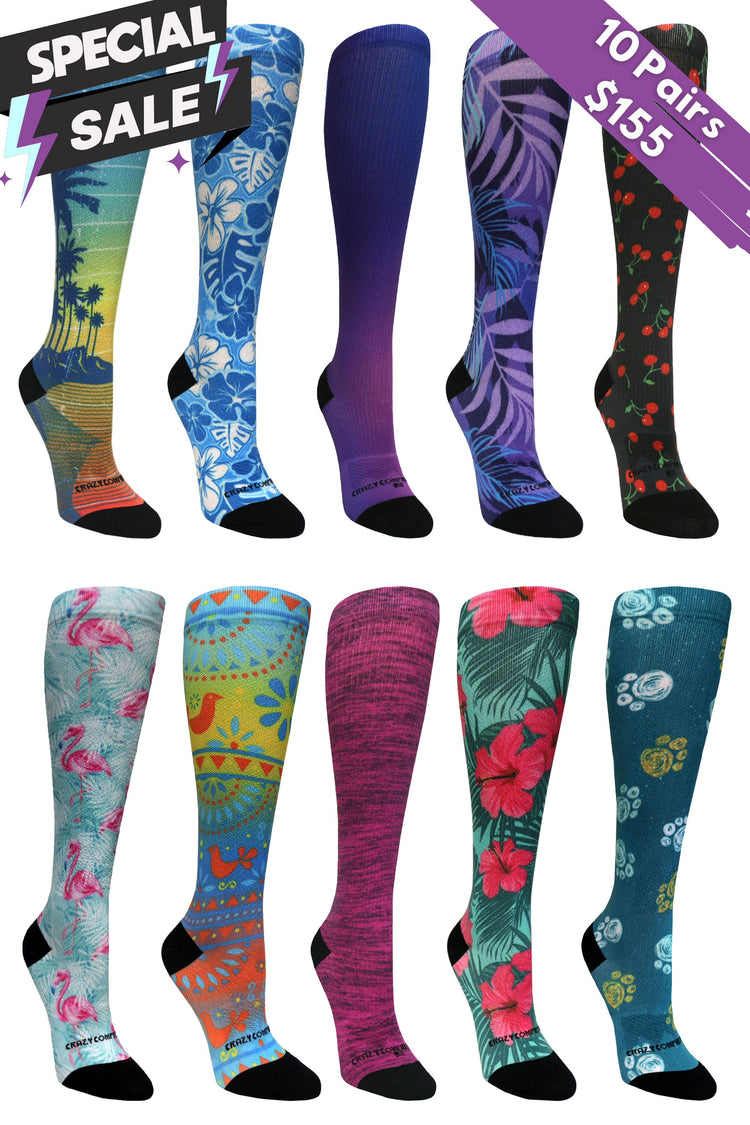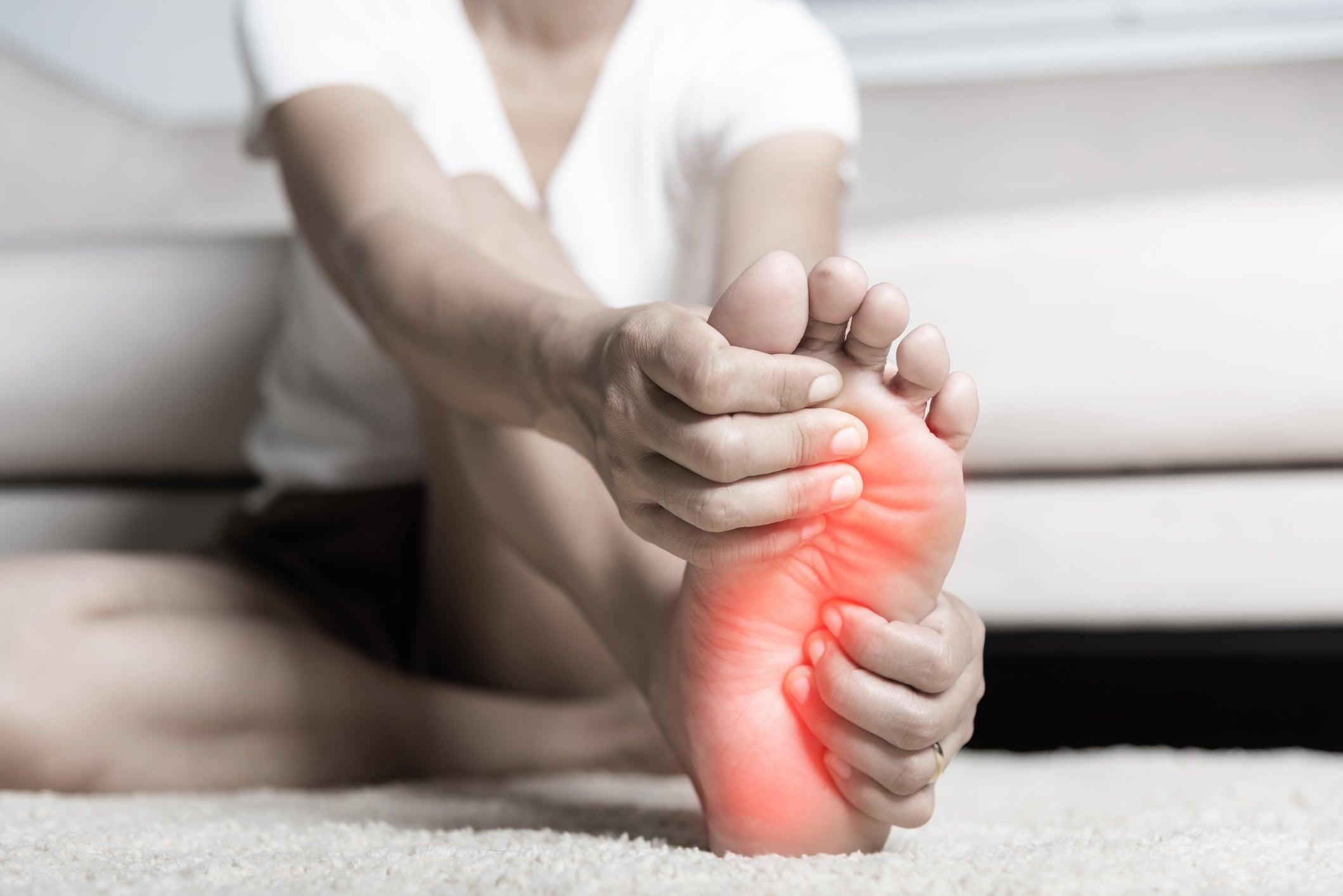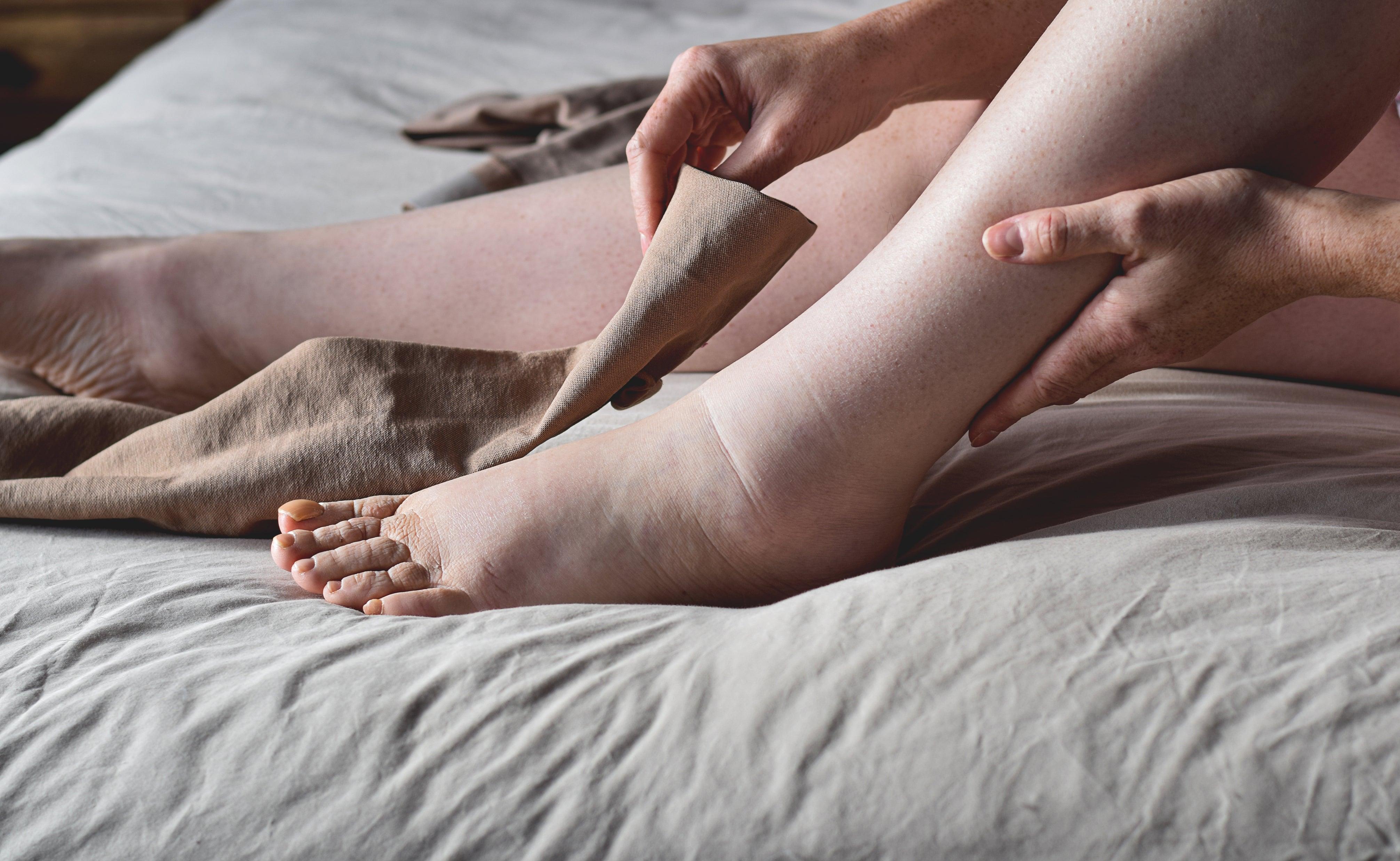Have you tried compression socks to deal with aching legs, varicose veins, or fatigue but found them to be just too tight? Then there’s good news! Mild compression socks may be the perfect balance of support and comfort to suit your lifestyle.
As the name suggests, compression socks are a type of garment that helps support your lower leg health by applying graduated compression to your feet, ankles, and calves. Many people can benefit from compression socks, from athletes to nurses to those with circulatory problems, but finding a pair that fits you perfectly can take a little know-how.
Choosing the most appropriate level of compression for your health history and lifestyle is key to getting the most out of your compression socks. And as it turns out, mild compression is all that most people need to support their leg health and daily comfort.
Read on to learn more about the benefits of compression socks, the different levels of compression, and to investigate whether mild compression socks may be the best choice for you.
The Benefits of Compression Socks
Compression socks, or compression stockings, are socks that have been specially designed to support the circulatory system by applying firm, even compression to the lower legs and feet.
Compression socks can help to:
- Boost circulation in the legs
- Reduce swelling in the feet and ankles
- Improve lymphatic drainage
- Relieve tiredness and aches
- Preventing deep vein thrombosis
- Managing blood pressure when standing up or sitting down
With such a varied range of benefits, compression socks can be supportive of many lifestyles and health conditions, including:
- Limiting swelling during pregnancy
- Improving performance and recovery for athletes
- Reducing fatigue and aches for people who spend all day on their feet
- Preventing discomfort and swelling for frequent flyers and aircraft crew
- Supporting circulation for those with diabetes
- Improving blood flow for wheelchair users
Levels of Compression
With so many benefits, it’s clear why compression socks are becoming a popular choice for people in all walks of life. However, there are different levels of compression that may suit different needs. No compression garment requires a prescription, but because they’re often part of a care management strategy, doctor oversight is recommended for higher compression levels and a prescription may help with insurance coverage.
Here’s a breakdown of each compression category and what they’re designed to help with.
Low - < 20 mmHg
Most compression socks designed for daily use are meant to deliver mild compression. They don’t generally require a doctor to prescribe them or oversee their use, so can be safely worn by most people. Mild compression socks are best for:
- Tired legs after standing all day
- General energy support
- Improved circulation, especially for those with diabetes
- Airplane travel
- Athletic recovery
Medium - 20–30 mmHg
Medium compression socks are the most common type of compression socks prescribed by doctors.
They can be helpful for the following issues:
- Varicose veins with mild edema or during pregnancy
- After vein surgery like sclerotherapy or phlebectomy
- Treating orthostatic hypertension, or low blood pressure when standing
- Deep vein thrombosis
- Healed leg ulcers
High - > 30 mmHg
The highest level of compression socks and garments are usually reserved for more severe medical conditions and should be worn only under the advice of a doctor.
High-compression socks can be useful in cases of:
- Moderate to severe venous edema
- Moderate to severe lymphedema
- After having a broken bone or orthopedic surgery
- For treating post-thrombotic syndrome
Which Level of Compression Is Right for You?
If you are unsure what level of compression your socks should be, it’s best to err on the side of mild compression. Unless you’re dealing with a moderate to severe health condition or a doctor has suggested a higher compression level, mild pressure ensures you’ll reap the benefits of compression socks without risking any complications. They can also be purchased without a medical prescription, and are a valuable tool for supporting everyday leg health and comfort.
How to Put on Compression Socks
The best time to put on your compression socks is first thing in the morning before any fluids have the chance to pool in your lower legs. Here’s how to put them on.
- Roll the socks from the top down to the heel
- Put your foot into the sock, lining your heel up with the heel of the sock
- Unroll the sock past your ankle toward your knee
- Make sure to smooth out any wrinkles or bunching to prevent tight spots
Of course, if your socks feel too tight or cause noticeable discomfort, it’s worth checking with a doctor if they’re right for you.
Meet Crazy Compression
When it comes to choosing mild compression socks that can become a fashionable and healthful staple in your daily life, Crazy Compression has you covered! With a huge range of high-quality compression socks, there’s an option for everyone. Crazy Compression creates fun and functional socks for men and women in neutral and colorful prints, and we also offer wide-calf compression socks that are built to the same exacting standards as all our traditional models.
If you’re looking to boost your leg health, support your circulation, and soothe tired legs, try Crazy Compression mild compression socks today. We’ve got the perfect pair for you!

































Leave a comment
This site is protected by hCaptcha and the hCaptcha Privacy Policy and Terms of Service apply.